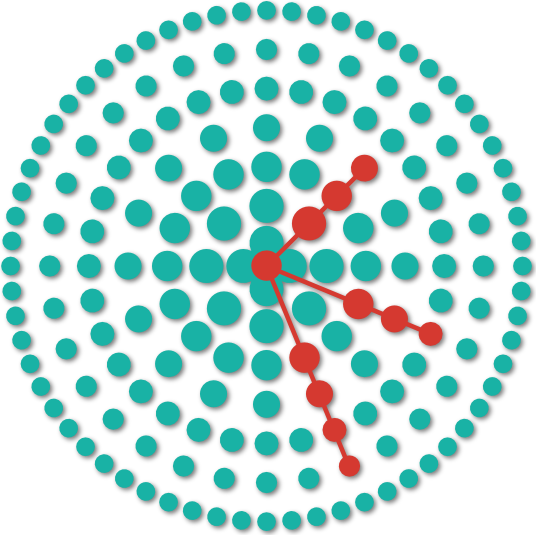An Overview of Pituitary Tumors


Your pituitary gland is responsible for the production and release of many essential hormones. These hormones are critical for normal body functioning. If a pituitary tumor overproduces a certain pituitary hormone, or impairs your pituitary gland's ability to produce other vital hormones, or if it begins to compress nearby structures, you should be equipped with as much knowledge as possible about the situation. Understanding basic information about pituitary tumors will allow you to react appropriately to a diagnosis and make an informed decision regarding treatment.
The purpose of this article is to provide an overview of the knowledge you need, including the symptoms, diagnosis, and causes of pituitary tumors. We hope that doing so will help guide you through this condition.
What Are the Types of Pituitary Tumors?
Although the pituitary gland is a tiny bean-sized structure, it is composed of many cell types that each secrete different hormones. Tumors of the pituitary gland can resemble certain cell types, and can also produce their corresponding hormone in excess. Some pituitary tumors do not produce hormones but instead cause problems by becoming too large and compressing nearby structures such as eye nerves. In other cases, pituitary tumors are small, do not produce hormones, and thus do not cause symptoms but may be discovered incidentally when imaging the head for an unrelated reason. In fact, it is believed that up to one in five people will develop a pituitary tumor in their lifetime.
Before discussing how pituitary tumors are classified, let’s go over some terms. Pituitary tumors are often referred to as pituitary adenomas. The “-oma” suffix is used to describe a tumor, so you have probably heard this used in the past for other tumor types (e.g. lymphoma, glioma, melanoma, osteoma, carcinoma). The prefix “aden-” refers to a gland. A pituitary adenoma is thus a glandular tumor of the pituitary. Almost all pituitary tumors are benign.
Pituitary adenomas are classified in several ways. The first way is by size. A microadenoma is a tumor that is less than 1 cm in size, while a macroadenoma is larger than 1 cm. While these tumors can grow, they do so very slowly if they grow at all. Their slow growth rate combined with the fact that many of them do not cause symptoms allows some pituitary tumors to go undiagnosed.
Another way to classify pituitary adenomas is by their ability to secrete hormones (functional) or not (non-functional). Functional pituitary adenomas secrete the same types of hormones that the pituitary gland produces, causing an excess of hormone circulation throughout the body. Functional pituitary adenomas can be further categorized by the type of hormone they release. For example, prolactinomas (also called lactotroph adenomas) are tumors that secrete the hormone prolactin, and thus resemble the lactotroph cells of the pituitary gland. Nonfunctional tumors, on the other hand, do not secrete hormones. Typically, microadenomas are functional and macroadenomas are non-functional.
Symptoms of Pituitary Tumors
Since a tumor is a physical mass, it can press against the vital structures surrounding it, disrupting their function. This physical disruption is commonly seen more in macroadenomas than microadenomas because they grow large enough to place pressure on the tissues around them.
Some of the general symptoms of a pituitary tumor include:
- Headaches
- Nausea
- Fatigue
- Vision problems
- Dizziness
- Facial numbness or pain
- Double vision
Functional pituitary tumors present an additional challenge to your health. Because they secrete excess hormones, they can bring an imbalance to many of your body's systems. The symptoms you experience from a functional pituitary tumor vary depending on what type of excess hormones the tumor is secreting. Because many pituitary hormones affect sexual characteristics, the symptoms can also differ between men and women.
Why should you have your surgery with Dr. Cohen?
Dr. Cohen
- 7,500+ specialized surgeries performed by your chosen surgeon
- More personalized care
- Extensive experience = higher success rate and quicker recovery times
Major Health Centers
- No control over choosing the surgeon caring for you
- One-size-fits-all care
- Less specialization
For more reasons, please click here.
How Healthcare Professionals Diagnose Pituitary Tumors

Figure 1. A tiny pituitary adenoma visible as a gray nodule in the pituitary gland (yellow arrow).
Diagnosing pituitary tumors requires a variety of imaging and laboratory tests, including a brain MRI. If you or your doctor suspect that a pituitary tumor is developing, there are several methods to confirm it for a proper diagnosis:
- Blood, urine, and saliva tests can measure the level of hormones in the body to determine whether there is an excess caused by a functional tumor or a deficiency caused by a tumor pushing against the pituitary gland.
- When pituitary tumors become large enough, they press on the nerves essential for eyesight. So, vision or visual field tests can help check if any aspects of your vision have been compromised.
- Imaging tests are the most common method used to find pituitary tumors. MRIs are usually the most accurate, followed by CT scans.
- If your doctor needs to be absolutely certain of your diagnosis after blood and imaging tests, they can perform a tissue biopsy on the tumor, though this is rarely necessary.
What Causes Pituitary Tumors?
As with any diagnosed medical condition, most people want to know what causes pituitary tumors. Often, this information can help to reveal risk factors or strategies for preventing the condition.
The most common cause of these tumors is a mutation in the formation of pituitary cell DNA. The mutation typically occurs during the replication of the DNA to form new cells, and it causes the growth of these cells to spiral out of control. Uncontrolled cell growth is what leads to a tumor forming.
Mutations in cellular DNA tend to be random, but in some rare cases, they can be passed down. This trait means some pituitary tumors can develop due to someone inheriting a preexisting genetic mutation. Fortunately, the conditions that can cause uncontrolled growth of pituitary cells are rare. And, aside from random or inherited genetic mutations, there are no known environmental exposures or risk factors that have been proven to cause pituitary tumors.
Are Pituitary Tumors Benign or Malignant?
With a diagnosis, many questions are raised about the relationship between pituitary tumors and cancer. Patients often have concerns with the proximity of pituitary tumors to the brain, and the costs and complexities of cancer treatment.
However, the overwhelming majority of pituitary tumors are benign adenomas, meaning that they are non-cancerous. Malignant pituitary carcinomas occur so rarely that there isn't much research available on their frequency and prevalence.
It is vital to understand the difference because of the effect both benign and malignant tumors can have on your health. While both types of pituitary tumors can potentially press against vital tissues and produce an excess of hormones, malignant tumors can spread to your brain, spinal cord, and other tissues. In addition, while pituitary adenomas have a slow growth rate, pituitary carcinomas grow much faster, limiting the amount of time you have for treatment.
Detecting the presence of a malignant pituitary tumor requires monitoring the condition to measure its growth. Doctors will also check if cells from the tumor have spread to other areas, which is the most common sign that it is cancerous.
Key Takeaways
Pituitary tumors are categorized by their size and whether or not they secrete excess pituitary hormones. They rarely cause symptoms, causing them to go undiagnosed for the majority of their development. However, when their presence is suspected, there are several methods available for testing and confirming a diagnosis. Most pituitary tumors are caused by genetic mutations, a rare few of which are hereditary, and these tumors are mostly non-cancerous.











